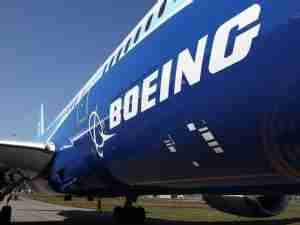Cathay Pacific Airways Ltd. is planning to recruit 4,000 staff between now and the end of 2023 to replenish its severely depleted workforce and gear up for an anticipated recovery in air travel as Hong Kong rebuilds itself as an aviation hub, according to Chief Executive Officer Augustus Tang.
While the hiring spree would still leave Cathay with significantly fewer employees than pre-Covid times with staff numbers at levels last seen in 2007, the plan marks a turnaround in the airline’s outlook after three years of turmoil and cost cutting. Cathay employed about 16,700 people at the end of 2021.
“Hong Kong is a very important international aviation hub and it is not off the map at all,” Tang said in an interview with Bloomberg News at Swire Pacific Ltd.’s Hong Kong headquarters earlier Wednesday. “In preparation for the recovery, we need to recruit well in advance because it takes a lot of time to recruit and train.”
Cathay intends to bring in 700 pilots and about 2,000 cabin crew, with the remaining positions open for frontline airport staff working in areas such as customer service, Tang said. Including Cathay’s subsidiaries, the total hiring plan numbers around 8,000.
Cathay’s workforce has shrunk by about 40% during the Covid-19 pandemic, more than other major carriers, including regional rival Singapore Airlines Ltd., which is bouncing back after the Southeast Asian nation dropped quarantine rules in April. Hong Kong is now making tentative steps to loosen travel restrictions and has lowered mandatory hotel quarantine to seven days from 21.
The Hong Kong-based carrier needs to bring in staff to cope with an expected surge in demand, Tang said. Airlines in other parts of the world that reopened sooner have struggled to hire people fast enough, leading to flight cancelations, delays and long queues of frustrated passengers at airports.
“We are adding more and more flights, more and more destinations,” Tang said. “At the beginning of this year we had 30, in April it was 45 and by the end of the year it will be more than 60, definitely.”
Cathay executives have previously raised concerns about an exodus of pilots from Hong Kong after rolling out new contracts with lower pay and fewer perks. Tang said the resignation rate among pilots in 2021 was “pretty low” and similar to historic levels, until November, when there was a jump after infected aircrew breaches rules, triggering dismissals. The infections caused a wave of colleagues and their families to be sent to the Penny’s Bay government quarantine camp as an omicron outbreak flared. Since then, the staff turnover rate has dropped again, though it does remain relatively high, he said.
From Protests, to a Pandemic
Tang has spent his career at conglomerate Swire Pacific, Cathay’s biggest shareholder, and mostly in aviation roles. On the brink of retirement in 2019, Tang, who had his 40th anniversary at the company this year, was thrust into the role of chief executive officer after the sudden departure of Rupert Hogg as the airline became embroiled in anti-government protests in Hong Hong.
The protests were a challenging start, with passenger traffic to Hong Kong stifled and Cathay having to navigate a tricky political tightrope to avoid angering Beijing while protecting the rights of employees and keeping customers on side. Then came the pandemic, an unprecedented crisis for the global aviation industry that hit Cathay especially hard because it has no domestic market to turn to when international travel evaporates.
“It is a fact Hong Kong is lagging behind in terms of the pace of recovery, but the momentum of Hong Kong opening up is gathering and I’m very confident it will continue to grow,” Tang said. “I don’t see any permanent damage to Hong Kong as an aviation hub.”
Looking On
Hong Kong’s cautious approach to Covid bedeviled Cathay, leaving it looking on as the likes of Singapore Airlines revived international networks as travel restrictions were dismantled in other markets. Cathay’s passenger traffic averaged just 458 people a day in April 2020 and the carrier was bleeding cash. To avert collapse, it shed 5,900 jobs, shut its regional unit Cathay Dragon and underwent a HK$39 billion ($5 billion) government-backed restructuring.
As part of that reorganization, Cathay received a HK$7.8 billion bridge loan from the government, which it extended last week. Tang said that would provide more flexibility and a buffer in case conditions worsen again. Bringing back capacity in terms of flights will also help the business.
“We don’t expect things will turn bad, but we are a conservative bunch and would like to have more in our back pocket,” he said.
With significant exposure to mainland China, Cathay was one of the first to feel the impact of Covid after the virus spread from Wuhan in early 2020. And the effects are lingering longer as leaders in Beijing persist with a zero-tolerance approach to infections. While Hong Kong has gradually moved away from that strategy, uncertainty over Covid policies and the path out of the crisis continue to cast a pall over the city.
Cathay said Tuesday that its first-half loss this year would be narrower than the same period in 2021, when it posted a deficit of HK$7.6 billion. Still, operations are a shadow of what they were before the pandemic, with passenger numbers in May 98% down on the same month of 2019.
In the depths of the pandemic, Cathay was burning through HK$3.5 billion a month. That’s now down to less than HK$500 million. Tang said Wednesday that the cash burn in the next few months will be within half a billion dollars.







